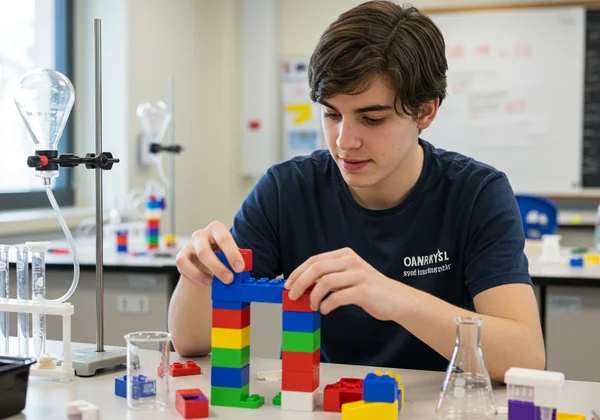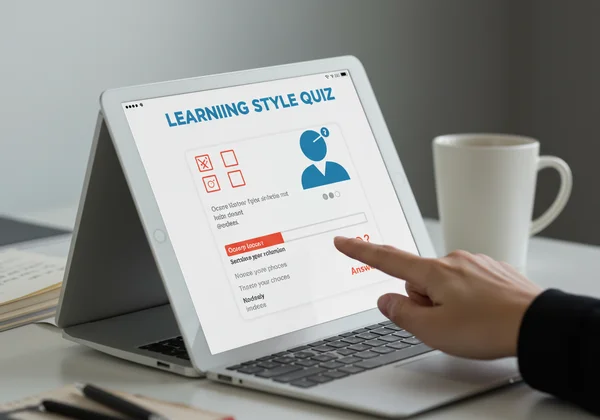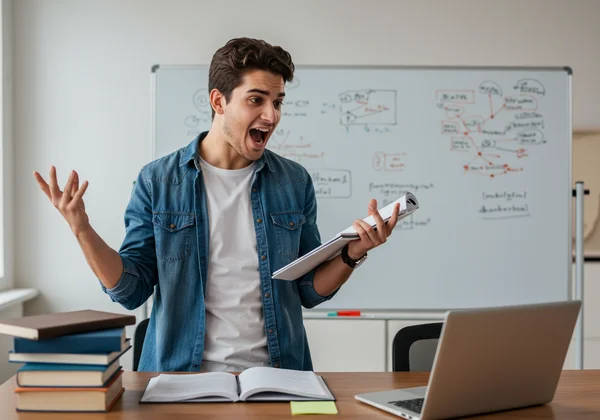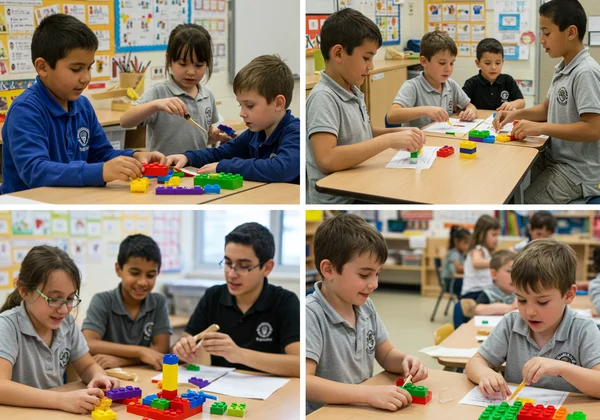The Kinesthetic Learning Style: A Hands-On Learning Style Quiz Guide
Do you find it difficult to learn by just listening to a lecture or reading a textbook? Do you feel the urge to move, fidget, or get your hands dirty to truly understand a concept? If so, you might be tapping into the power of the kinesthetic learning style. Many people wonder, What kind of learner am I? Understanding this can be the key that unlocks your full potential. This guide will explore the world of learning by doing, offering strategies for students, educators, and parents to harness this dynamic approach.
The kinesthetic learning style is a tactile, hands-on method where physical experience is paramount. Unlike visual learners who rely on sight or auditory learners who depend on sound, kinesthetic learners absorb information best through touch, movement, and action. They are the "doers" of the world, building, creating, and experimenting to make sense of their surroundings. To find out your dominant preference, a great first step is to take a free learning style quiz designed to pinpoint your unique strengths.
What is the Kinesthetic Learning Style?
At its core, the kinesthetic learning style is about physical engagement. People with a strong kinesthetic preference connect learning with bodily sensations and muscle memory. Sitting passively in a classroom can feel like a barrier to them; they need to participate physically to form strong memories and connections. This style is a fundamental part of the widely recognized VAK (Visual-Auditory-Kinesthetic) model of learning styles.
Think of it this way: a visual learner might understand how a car engine works by studying a diagram. An auditory learner might grasp it by listening to a detailed explanation. A kinesthetic learner, however, will truly understand it only after they’ve had a chance to take an engine apart and put it back together.

Key Characteristics of Kinesthetic Learners
Do any of these traits sound familiar? You might be a kinesthetic learner if you:
- Have excellent hand-eye coordination and motor skills.
- Learn best through hands-on activities like experiments, labs, or role-playing.
- Tend to fidget or move around when you have to sit still for long periods.
- Enjoy sports, dance, acting, or other physical hobbies.
- Prefer to demonstrate how to do something rather than explain it verbally.
- Are drawn to careers that involve physical work, such as a chef, surgeon, mechanic, or athlete.
- Use gestures and body language frequently when you talk.
The Science Behind Learning by Doing
This preference isn't just a quirk; it's rooted in neuroscience. When you engage in a physical activity, you activate the brain's motor cortex. This process creates stronger, more durable neural pathways associated with the memory, an effect often called "muscle memory." For a kinesthetic person, the physical act of writing notes, building a model, or even pacing while studying reinforces learning in a way that passive observation cannot. This type of tactile learning embeds knowledge deep within the brain and body.
Identifying Your Kinesthetic Learning Preferences
So, how do you know for sure if you're a hands-on learner? Answering the question, How do you identify your learning style? is the first step toward optimizing your efforts. While the characteristics above are strong indicators, a structured assessment can provide clarity and confidence.
Signs You Might Be a Hands-On Learner
Beyond the general characteristics, there are subtle daily signs. You might be a hands-on learner if you find yourself preferring to try a new recipe by jumping right in, rather than reading it from start to finish. Perhaps you assemble furniture without looking at the instructions, preferring to figure it out by touch and feel. If you're a student, you might remember information better if you act it out or create a physical project related to the topic. These are all hallmarks of a preference for hands-on learning.
How Our Free Learning Style Quiz Can Help
The most effective way to confirm your learning style is by taking a well-designed assessment. On our platform, we offer a visual auditory kinesthetic test that is free, fast, and requires no registration. Based on established educational models like JKAV™ and refined with data from over 1.4 million participants, our quiz provides you with a clear profile of your learning preferences. In minutes, you'll receive personalized insights and actionable strategies to help you succeed, whether you're a student, a teacher looking to engage your class, or a parent wanting to support your child's education.

Actionable Kinesthetic Learning Strategies for Students
Once you've identified your kinesthetic preference, you can start using kinesthetic learner tips to your advantage. This is where you can answer the crucial question: How can I improve my study habits based on my learning style? The goal is to transform passive study sessions into active learning experiences.
Top Study Techniques for Active Learners
Forget spending hours sitting motionless at a desk. These study techniques are designed for movement:
- Walk and Talk: Pace around your room while reading your notes aloud. The combination of movement and speech reinforces memory.
- DIY Flashcards: The physical act of writing out flashcards is a powerful kinesthetic activity. Flipping through them adds another layer of tactile engagement.
- Trace the Words: When reading a textbook, use your finger or a pen to trace the words on the page. This simple action keeps your body engaged with the material.
- Build It to Learn It: For complex subjects like biology or chemistry, build 3D models of cells, molecules, or systems using clay, building blocks, or craft supplies.
- Teach It to Someone Else: Stand up and teach the concept to an imaginary audience. Use a whiteboard or large paper to draw diagrams as you explain.
Incorporating Movement & Experience into Learning
Learning doesn’t have to be confined to a desk. Find ways to connect abstract concepts to physical activities. If you're studying history, try acting out a key scene. For physics, conduct simple experiments at home to demonstrate principles like gravity or momentum. This method of linking new information to a physical experience creates strong, lasting memories.

Real-World Examples of Kinesthetic Success
Consider the story of a college student who struggled with anatomy. Lectures and textbooks were a blur, but once he started using an anatomical model and tracing the muscles and bones with his fingers, his grades skyrocketed. His success wasn't due to studying harder, but studying smarter by aligning his methods with his kinesthetic nature. This shows how leaning into your style can make all the difference.
Empowering Kinesthetic Learners: Advice for Educators & Parents
Supporting a kinesthetic learner means creating an environment where they can thrive. Both teachers and parents can play a huge role in fostering a love of learning by embracing movement and activity.
Classroom Strategies for Engaging Active Students
Educators can transform their classrooms with these practical classroom strategies:
-
Incorporate Movement Breaks: Allow for short stretch breaks or quick physical activities between lessons.
-
Use Learning Stations: Set up different stations around the room where students can move and engage in various hands-on tasks.
-
Encourage Role-Playing: Let students act out historical events, literary scenes, or scientific processes.
-
Hands-On Projects: Prioritize labs, experiments, and building projects over lectures and worksheets whenever possible.
-
Flexible Seating: Consider options like standing desks or wobble chairs that allow for subtle movement.

Supporting Hands-On Learning at Home
Parents can make homework and learning at home more effective by supporting at home with these ideas:
- Turn Chores into Lessons: Teach fractions while baking cookies or physics while playing catch.
- Use Educational Toys: Puzzles, building blocks, and science kits are fantastic tools for kinesthetic learners.
- Create a "Go" Zone: Designate a space where your child can move around while studying without being told to "sit still."
- Visit Museums and Exhibits: Take learning outside the house to interactive science centers or historical sites where they can touch and explore.
Understanding your child's natural tendencies is the first step. To get a clear picture, you can try the quiz together.
Embrace Your Active Learning Style
Your kinesthetic learning style is not a disadvantage—it's a superpower. It means you are uniquely wired to learn through experience, action, and engagement with the world around you. By embracing this and using tailored strategies, you can make learning more effective, enjoyable, and meaningful.
Stop fighting your natural instincts and start leveraging them for success. Ready to confirm your learning style and get a personalized roadmap with even more tips? Take the first step toward a richer, more effective learning journey. Discover your results on our fast, free, and insightful quiz today!
FAQ Section
What does it mean to be a kinesthetic learner?
To be a kinesthetic learner means you learn best through physical experience—by touching, moving, and doing. You absorb information most effectively when your body is engaged in the learning process, rather than by simply listening or watching.
How do I know if I'm a kinesthetic learner?
You might be a kinesthetic learner if you are active, have good coordination, prefer hands-on activities, and find it hard to sit still. The most reliable way to know for sure is to take an assessment. Our learning style quiz for students and adults can give you a clear and accurate profile of your preferences in just a few minutes.
Is kinesthetic learning better than visual or auditory learning?
No single learning style is "better" than another; they are simply different ways of processing information. The most effective style is the one that works best for you. Many people are a combination of styles but have one dominant preference. Success comes from identifying your dominant style and using strategies that cater to it.
What are some fun activities for kinesthetic learners?
Kinesthetic learners thrive on fun, active tasks. Great activities include building with LEGOs or clay, conducting science experiments, playing sports, participating in scavenger hunts, acting in plays, dancing, and going on nature walks to identify different plants and animals.